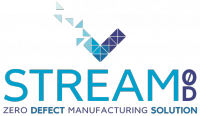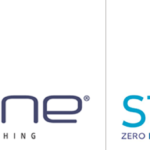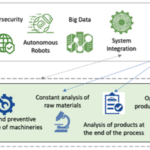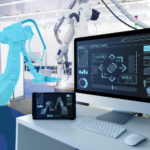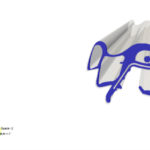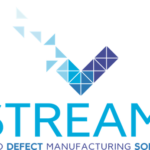Real-time simulation tools for off-line process optimization
Real-time simulation is a key component in Zero-Defect Manufacturing (ZDM), the new approach towards total quality management. Because quality is not just a matter of detecting non-compliant products, but reducing also their amount.
During the last few decades, the demand for an improvement of production quality controls in factories highly increased. Therefore, the number of verification processes escalated and acceptance tolerances tightened; what surely improved is the overall quality, but with a non-negligible side effect: the costs related to the increment of rejected parts. Recently, a new approach to quality is becoming more popular; quality is not just a matter of detecting non-compliant products, but also reducing their amount: this is why Zero-Defect Manufacturing (ZDM) became a hot topic nowadays.
Predicting errors
One of the most promising techniques is modeling the manufacturing process in order to forecast the final result before it actually occurs, so proper corrections in the process can be made if a non-conformity is forecasted. And this is what STREAM-0D project intends to achieve by testing STREAM-0D solution in three pilot cases.
One of them is the manufacturing of roller bearings, which comprises several machining processes. Currently, a dimensional check after some machining processes is performed in order to discard or rework pieces below or over the tolerance window. A detailed look into the process revealed this check is not done just after the machining, but randomly by picking pieces from a transfer buffer, where outputs from a certain machining process are waiting for the next one. As every machining process involves heat and heat means thermal expansion, depending on how much time is the piece waiting for at the buffer, a ‘thermal bias’ might occur in the measurement. As a result, if a hot item is measured and found over tolerance, this is rejected although might probably be under tolerance if it were let cool down.
STREAM-0D aims at creating a real-time model for modeling the thermal dilatation behavior of the part in function of the real temperature in order to forecast the actual dimensions at room temperature to assess whether the item is size compliant.
Reduced-Order Modeling
Building a model is a trade-off between simplicity and accuracy. Simple models are good enough for on-line closed loop control systems, but are not detailed enough for detecting product non-conformities. In our pilot case, surface temperature cannot represent accurately the inner temperature all around the bearing, so this simple model cannot be used. For accurate predictions much more complex models are required, usually based in Finite Elements Method (FEM), considering as process output not just a single item but sub-dividing it in many small particles which interact one each other and with the surrounding environment. These models take into account geometry details and can describe with precision the thermal dilation of the part. Unfortunately, the computational time for these detailed models often exceeds the duration of the process itself.
The management of huge amounts of data can be tricky even for powerful computers. Fortunately, there is some mathematical techniques that can be applied in order making it affordable, such as the so-called ‘Reduced Order Model’ (aka ROM).
A ROM is a compilation of all the information gathered through the detailed simulation process (all possible input combinations and their resulting outputs), but mathematically processed in a form of sums of one-dimensional algebraic equation (sums and products of small terms) to simplify computation. Without diving under complex algebra explanations, the main idea under ROM is that computers make faster many but simpler calculations than few but complex ones. Besides, the size of the file generated by the ROM is pretty smaller than the original info, as non-useful info is removed.
—
This article was provided by ITAINNOVA, STREAM-0D project consortium partner.
Follow STREAM-0D on:
